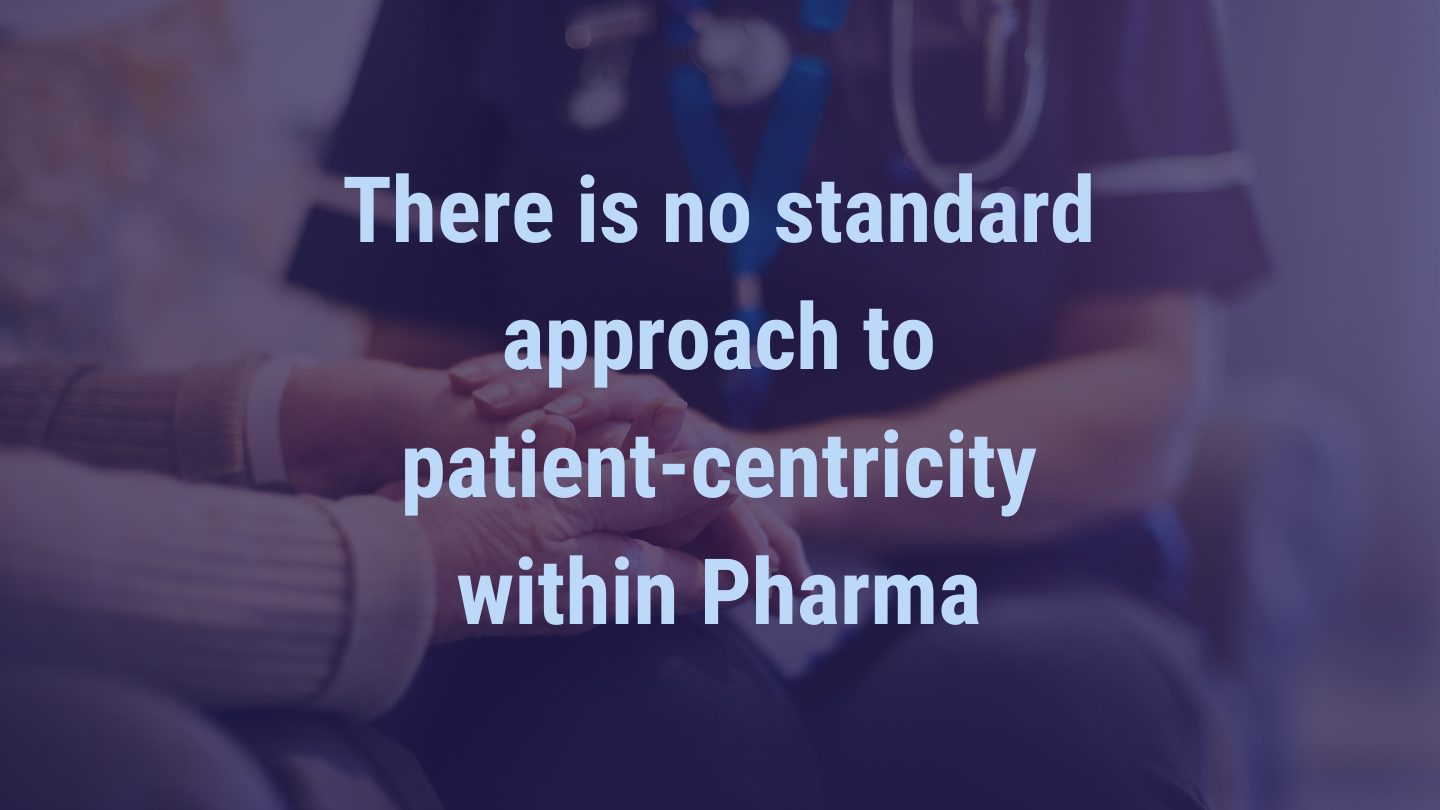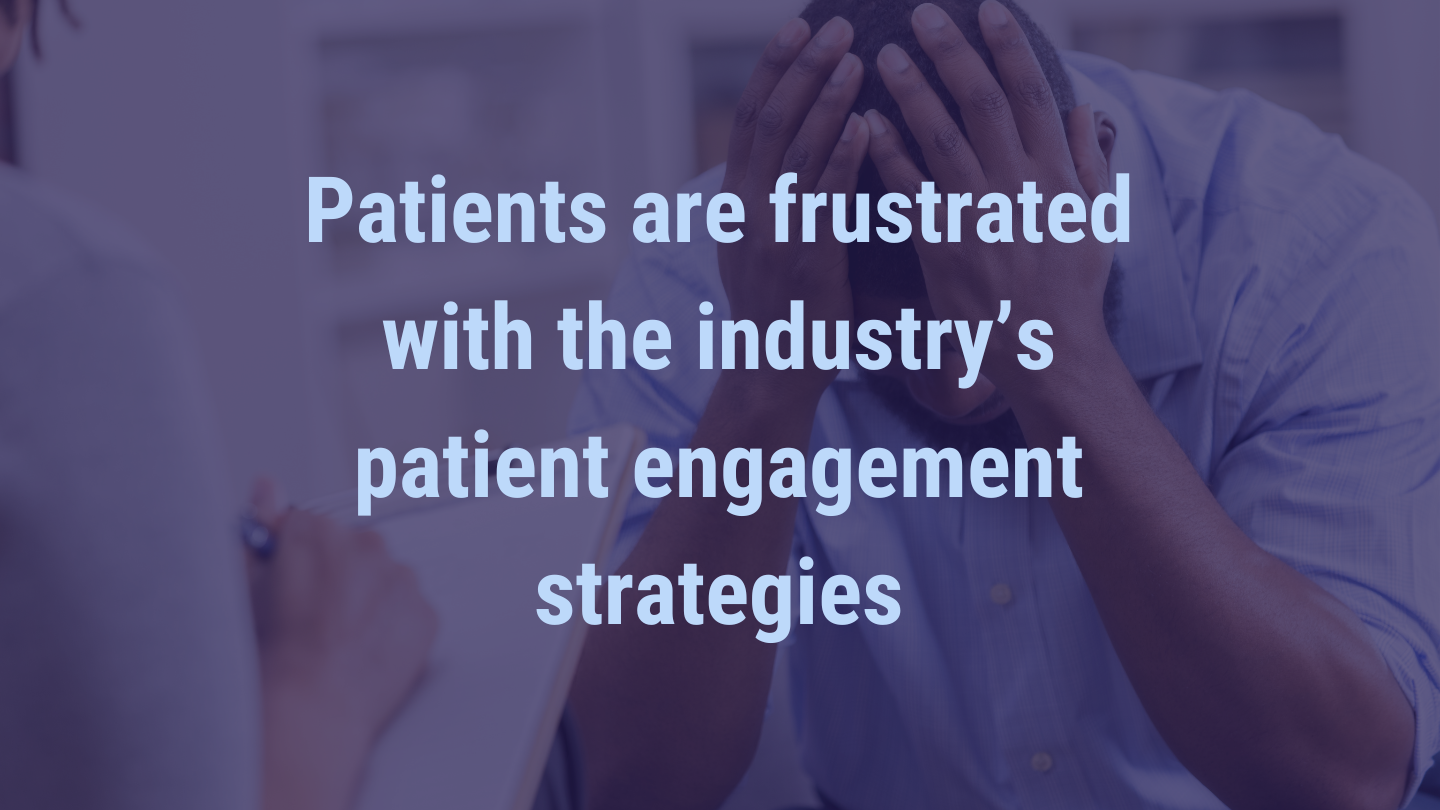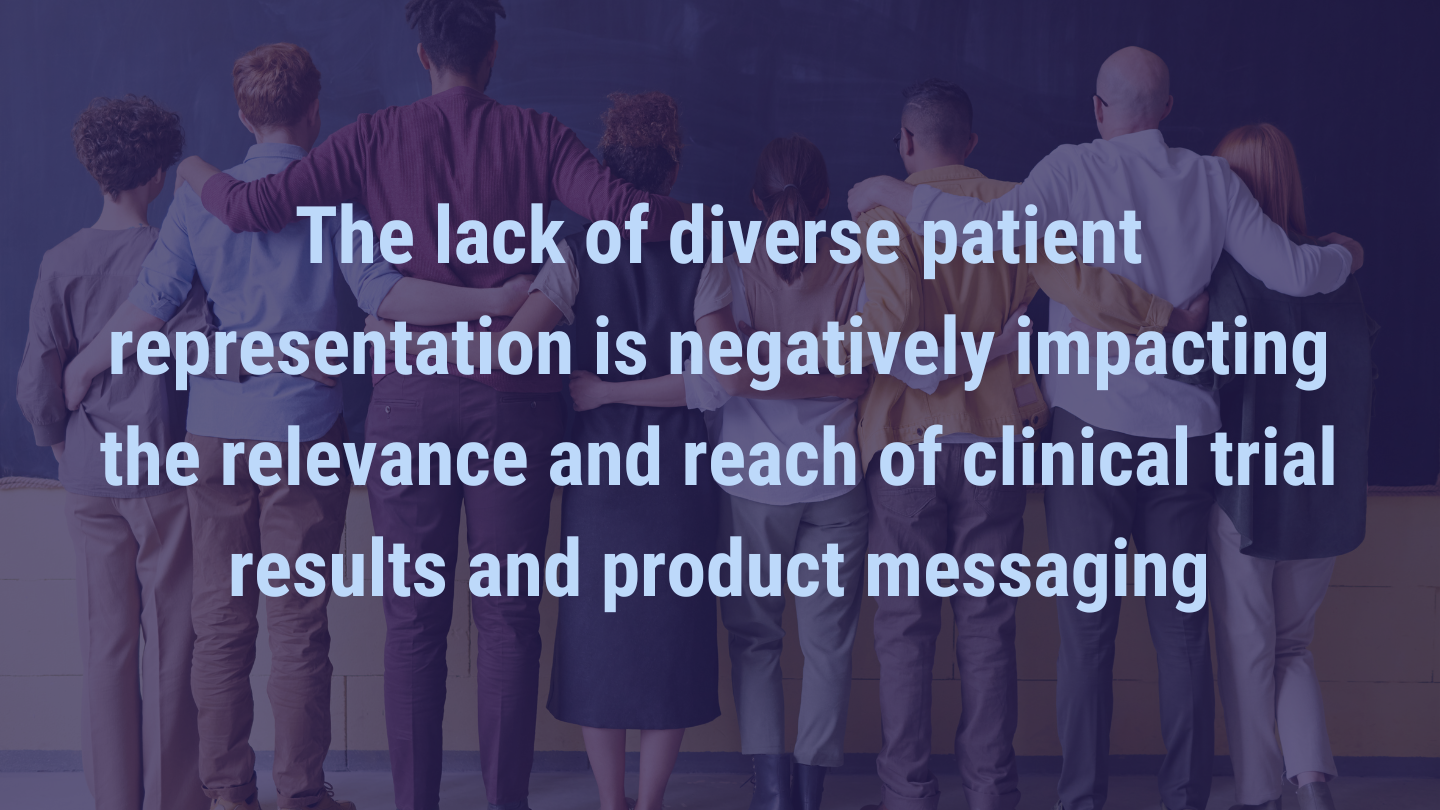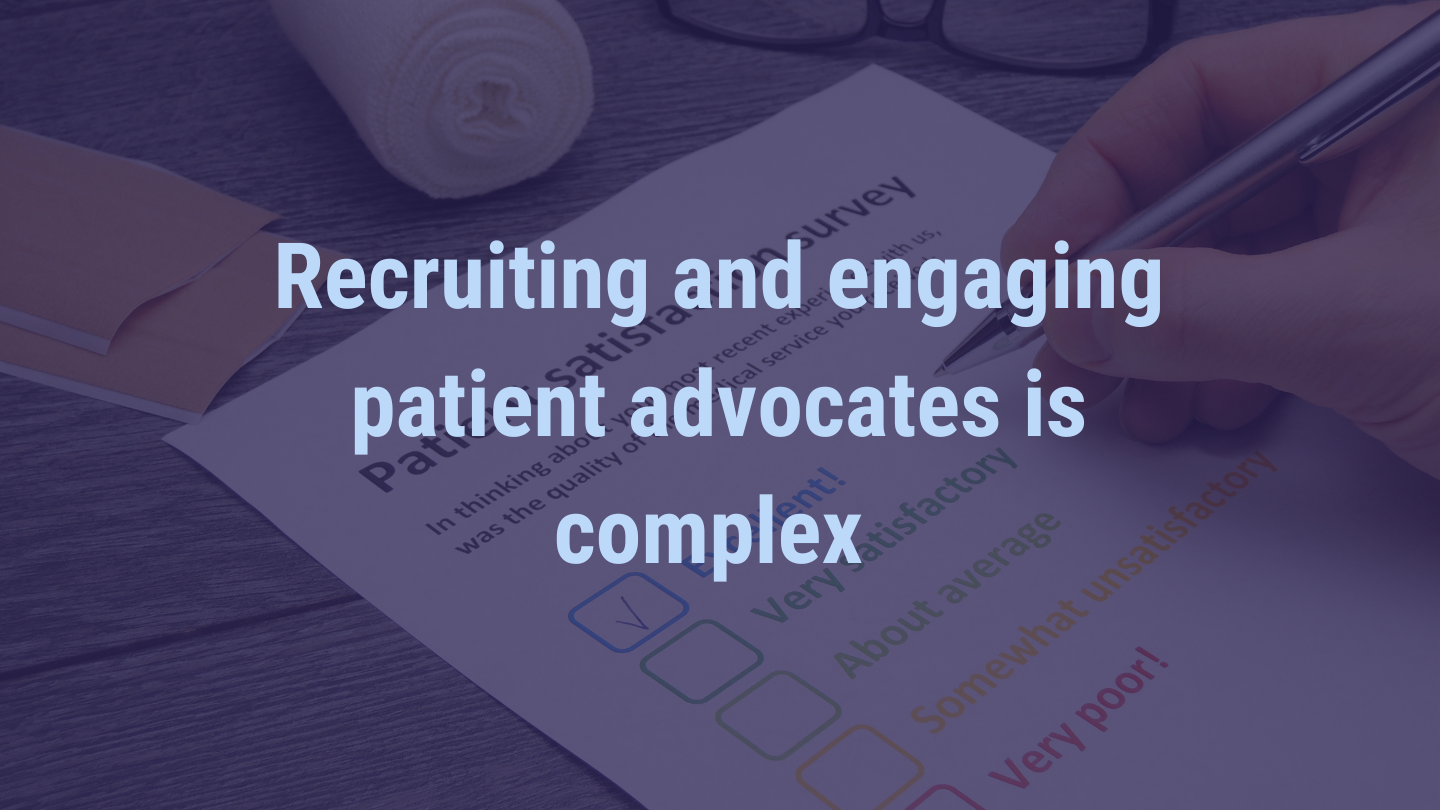

1. There is no standard approach to patient-centricity within Pharma
- Pharmaceutical drug development is a highly regulated and structured process wherein patient involvement is increasingly required.
- However, the term “patient-centricity” is becoming overused and the concept is losing its meaning.
- In fact, there is still no universally used definition of patient-centricity within the life sciences industry, nor is there a standard framework or approach.
- Especially, there is often a disconnect between different functions within each Pharma company in how they approach patient-centricity. The presence of silos and lack of communication between different departments working on similar patient issues can prevent insights from turning into solutions.

2. Patients are frustrated with the industry’s patient engagement strategies
- Within the pharmaceutical industry, over 90% of people consider patient-centricity to be highly important. However, only 20% of patients are reportedly aware of the support services pharmaceutical companies offer.
- In another survey, only 44% of patients stated that their needs are being met by pharmaceutical companies. The largest gaps identified were related to engaging directly with patients.
- Pharma is used to getting feedback from healthcare providers (HCPs) on what they have heard or what they think their patients are experiencing and feeling. However, this does not provide the full picture.
- Patients consider their involvement in the medicine development process to be suboptimal and have voiced frustration with the industry’s patient engagement practices, including burdensome contracts, Pharma engaging with the patient community too late in the product life cycle, and the lack of long-term, sustained Pharma-patient relationships.

3. The lack of diverse patient representation is negatively impacting the relevance and reach of clinical trial results and product messaging
- Despite having a disproportionate burden for certain diseases, racial and ethnic minorities are frequently underrepresented in biomedical research.
- Patients not living in proximity to large medical centers or with inflexible work or family circumstances are often unable to access clinical trials and other Pharma engagement opportunities. Disproportionately, this affects people from minority communities.
- Inclusive and fair enrollment and engagement practices cannot be achieved while these accessibility obstacles remain.
- Without diverse representation in clinical trials and Pharma-sponsored patient engagement programs, patients’ interest and confidence in new treatments may also be reduced, irrespective of their effectiveness.
- Further, the lack of diversity increases medical mistrust (and thereby uptake and adherence issues) among marginalized communities and limits generalizability of clinical trial data.

4. Recruiting and engaging patient advocates is complex
- Engaging patients or patient advocate leaders is still a new concept to many Pharma teams, and getting started can feel daunting and overwhelming.
- Coordinating with multiple different groups of stakeholders, especially patients, caregivers, and advocacy groups, can be difficult if there is no (or too many) experienced in-between liaison(s).
- Engagement opportunities, clinical trials, and educational/support resources are not always accessible to patients, especially for those from underserved and underrepresented communities.
There is (and should be) no one-size-fits-all approach to patient-centricity, only best practices. However, to overcome the many obstacles and create products and solutions that are meaningful and that will ultimately improve not just the patients’ treatment outcomes but also their quality of life, Pharma should:
Look within the company
Establish processes
for how to best quantify (and eventually eliminate) patients’ unmet medical needs, design patient-centric clinical studies, improve patient support programs (PSPs), and translate insights into opportunities.
Establish processes
Focus their patient-centricity
Establish patient advisory boards
or steering committees comprising diverse individuals from different geographic locations, cultures, races, ethnicities, genders, socioeconomic statuses, educational levels, and ages to gather representative insights.
Build trust
Consistently and systematically
engage patients across the product life cycle and incorporate the patient voice at each stage, from early-phase clinical trials to commercialization and patient/provider education.
Transition
to a personalized approach that seeks to understand patient and provider preferences across their entire journeys, and develop much deeper and more personalized patient journey maps to develop tailored communication strategies.
Place specific focus
Decentralize study sites,
leverage digital tools, and work with diverse investigators to improve accessibility and diversify clinical research.
Work with patients
and patient advocacy groups to co-develop clinical trial protocols, designs, and communication channels that will improve patient recruitment and retention. If asking for feedback, do it early enough that the protocol can be changed accordingly, not just to confirm your bias.
Ensure accessibility
There is (and should be) no one-size-fits-all approach to patient-centricity, only best practices. However, to overcome the many obstacles and create products and solutions that are meaningful and that will ultimately improve not just the patients’ treatment outcomes but also their quality of life, Pharma should:
Look within the company
Establish processes
for how to best quantify (and eventually eliminate) patients’ unmet medical needs, design patient-centric clinical studies, improve patient support programs (PSPs), and translate insights into opportunities.
Establish processes
Focus
Establish patient advisory boards
or steering committees comprising diverse individuals from different geographic locations, cultures, races, ethnicities, genders, socioeconomic statuses, educational levels, and ages to gather representative insights.
Build trust
Consistently and systematically
engage patients across the product life cycle and incorporate the patient voice at each stage, from early-phase clinical trials to commercialization and patient/provider education.
Transition
to a personalized approach that seeks to understand patient and provider preferences across their entire journeys, and develop much deeper and more personalized patient journey maps to develop tailored communication strategies.
Place specific focus
Decentralize study sites,
leverage digital tools, and work with diverse investigators to improve accessibility and diversify clinical research.
Work with patients
and patient advocacy groups to co-develop clinical trial protocols, designs, and communication channels that will improve patient recruitment and retention. If asking for feedback, do it early enough that the protocol can be changed accordingly, not just to confirm your bias.
Ensure accessibility
There is (and should be) no one-size-fits-all approach to patient-centricity, only best practices. However, to overcome the many obstacles and create products and solutions that are meaningful and that will ultimately improve not just the patients’ treatment outcomes but also their quality of life, Pharma should:
Look within the company
Establish processes
for how to best quantify (and eventually eliminate) patients’ unmet medical needs, design patient-centric clinical studies, improve patient support programs (PSPs), and translate insights into opportunities.
Establish processes
Focus
Establish patient advisory boards
or steering committees comprising diverse individuals from different geographic locations, cultures, races, ethnicities, genders, socioeconomic statuses, educational levels, and ages to gather representative insights.
Build trust
Consistently and systematically
engage patients across the product life cycle and incorporate the patient voice at each stage, from early-phase clinical trials to commercialization and patient/provider education.
Transition
to a personalized approach that seeks to understand patient and provider preferences across their entire journeys, and develop much deeper and more personalized patient journey maps to develop tailored communication strategies.
Place specific focus
Decentralize study sites,
leverage digital tools, and work with diverse investigators to improve accessibility and diversify clinical research.
Work with patients
and patient advocacy groups to co-develop clinical trial protocols, designs, and communication channels that will improve patient recruitment and retention. If asking for feedback, do it early enough that the protocol can be changed accordingly, not just to confirm your bias.





